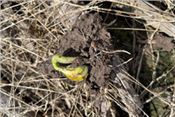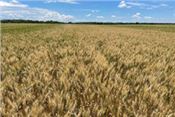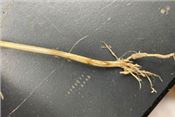Spring Rains Bring Root Rots To Missouri Field Crops
DR. KAITLYN BISSONNETTE AND DR. PENG TIAN
COLUMBIA, MO.
Persistent rains have resulted in ample conditions for seedling and root rotting diseases in many Missouri fields this spring season. Most prominently, Pythium species have been resulting in infection of the roots of corn, soybean, and wheat in fields, especially in the northern half of the state. Infection by Pythium species favors cool, wet weather which was present throughout Missouri for much of April and May. As soil temperatures increase, infection will slow down and eventually cease.
Of major concern are fields where stand loss is evident as a result of seedling diseases in corn and soybean. These fields may have seed that is rotting in the ground or have young plants that have emerged but have begun to die back after several weeks of slow growth. Prolonged exposure to cool, moist soils, even with a seed treatment, can still result in seedling disease especially when the disease pressure is high. Understanding when to replant is also important as some stand loss in soybean is impactful than in corn. However, the MU guide to replant decisions can help to make these calls much easier.
Winter wheat production also has not been left out of the game this year when it comes to root rotting diseases. A number of winter wheat fields have quickly begun to show symptoms of stunting and white heads in patches or in strips across the field. Upon closer examination, roots were infected with not only Pythium species but Rhizoctonia and Fusarium species. As these root diseases have set in during the grain fill period in many fields, affected areas have low or no grain production. As temperatures warm and soils dry, infection levels will decrease. Additionally, as these diseases are in the soil, movement into other areas of the field is unlikely prior to the harvest time.
Field assessments should rely on percentage of acreage affected and severity of root rot symptoms.
If you suspect seedling diseases in soybean or corn fields, or root rots in your wheat field, contact the MU Plant Diagnostic Clinic at plantclinic@missouri.edu or at 573-882-3019. ∆
DR. KAITLYN BISSONNETTE: Department of plant pathology, University of Missouri
DR. PENG TIAN: Director of The Plant Diagnostic Clinic, University of Missouri

Figure 1 Soybean seedlings, one rotten and one slow to emerge, from a soybean field with extensive stand loss due to seedling disease.

Figure 2 Field of wheat with symptoms of root rot showing blank heads and early maturing plants in patches.

Figure 3 Symptoms of sharp eyespot at the base of a wheat plant caused by Ceratobasidium cereale (Rhizoctonia cerealis).